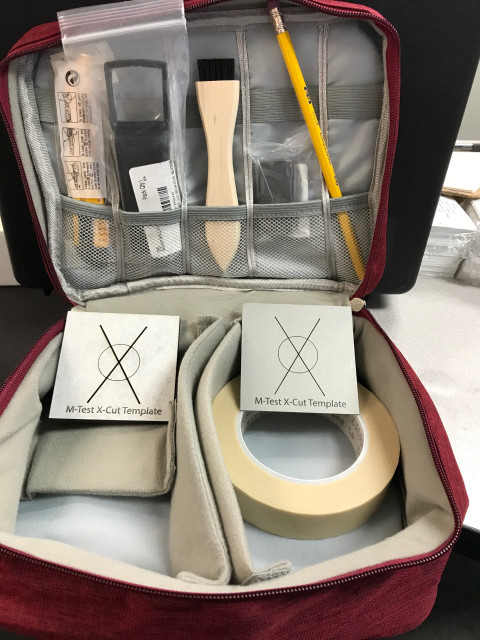- Description
- Additional information
- Reviews (0)
Description
Zero Plates

Zero Plates are available as uncoated precision machined steel or aluminum (6061-T6) in a variety of plate sizes.
Order Guide
PosiTector 6000 F, FS, FRS, FN, FNS, FNRS, FXS, FNDS, F microprobes
PosiTest DFT Ferrous Combo
Diameter: 38 mm (1.5″)
PosiTector 6000 N, NS, NAS, NRS, FN, FNS, FNRS, FNDS, N microprobes
PosiTest DFT Combo
Diameter: 38 mm (1.5″)
PosiTector 6000 FT, FTS, FTRS, FNTS, FKS, FHXS probes
100 mm x 100 mm x 6 mm
(4″ x 4″ x 0.25″)
PosiTector 6000 FNTS, NKS probes
100 mm x 100 mm x 6 mm
(4″ x 4″ x 0.25″)
PosiTector 6000 FLS, FJS, FNGS probes
180 mm x 180 mm x 6 mm
(7″ x 7″ x 0.25″)
What are zero plates used for?
Use with Certified Coated Metal Standards
Coated Metal Standards for magnetic and eddy current gages usually include an uncoated zero plate. The first gage measurement is taken on the zero plate to verify that the gage measures zero correctly. If not, electronic gages can usually be adjusted to “0” on the zero plate. After this adjustment is performed, the gage should measure within tolerance on the coated standards.
Use with certified and non-certified plastic shims and polystyrene blocks
A zero plate provides a convenient base onto which plastic shims and polystyrene blocks can be placed for verification purposes. Check zero, adjust to “0” if necessary, then place the shim/block on the zero plate and measure.
Substitute as a base for materials without a substrate
Zero plates can be used to provide a substrate where none exists. Large sheets of material such as paper, plastic, fabric and rubber can be measured with a coating thickness gage by placing the material over the zero plate. This is useful when the measured item is too large to access with a micrometer or other device. For example the screen printing industry uses zero plates to measure the thickness of the “substrate” being printed.


Additional information
| Weight | 453.59237 kg |
|---|---|
| Size | STDZSTL 1.5" |















Reviews
There are no reviews yet.